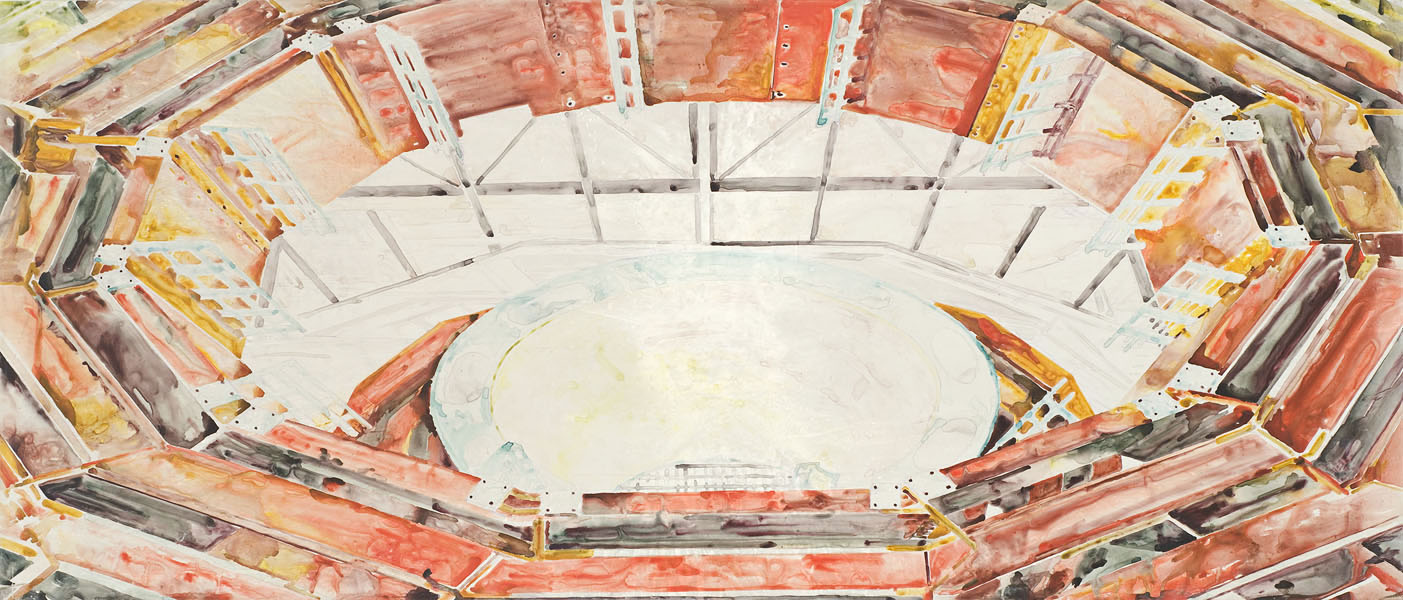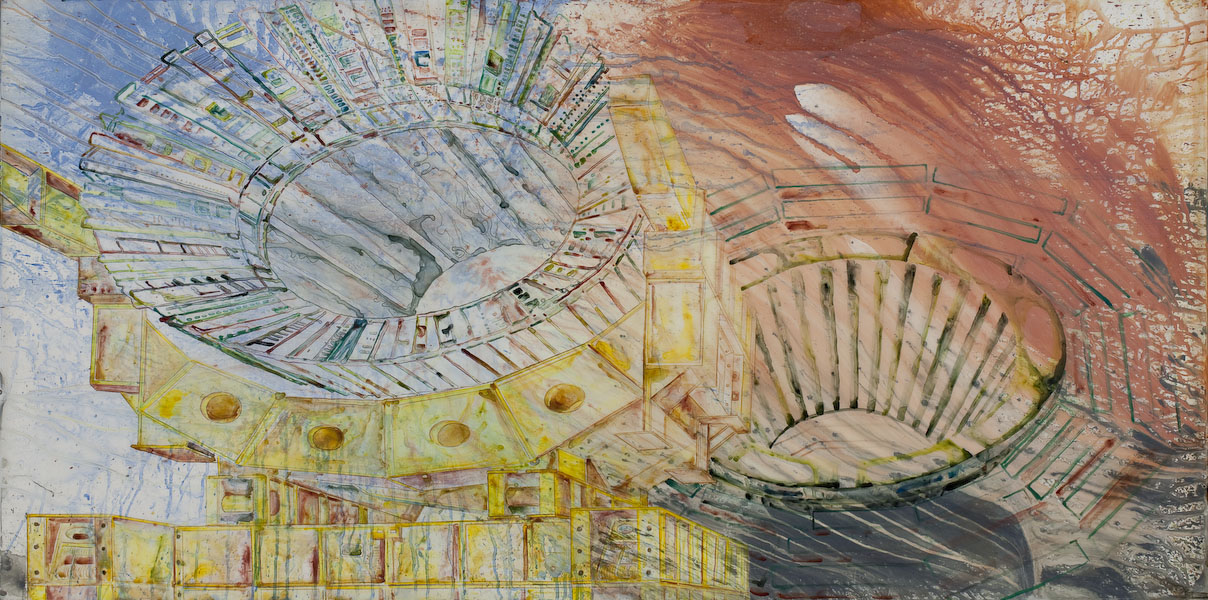Cathedrals of the Scientific Age
Victor Weisskopf, noted physicist and former
director-general of CERN, considered particle accelerators the "gothic
cathedrals of the 20th century." I imagine he was thinking of the
similarities of scale and collective effort and expense involved in their
construction. Perhaps he considered them both to be places where the
sacred and the mysterious were joined in a quest for the illumination of
knowledge. Certainly a reaction of awe is a natural response.
|
||||||
|
Jonathan Feldschuh, Large Hadron Collider #24, pencil
and acrylic on mylar, 36" x 84", 2009 Compare this to the conventions of interior church views as seen in these examples of 17th century Dutch paintings:
|
||||||
|
||||||
| Some other paintings from the Large Hadron
Collider Series have similar themes:
Jonathan Feldschuh, Large Hadron Collider #19, pencil and acrylic on mylar, 36" x 84", 2008
Jonathan Feldschuh, Large Hadron
Collider #17, pencil and acrylic on mylar, 42" x 84", 2008 |
||||||
|
- Jonathan Feldschuh, 4/11/2013
|
||||||
|
Look at more statements |
|




